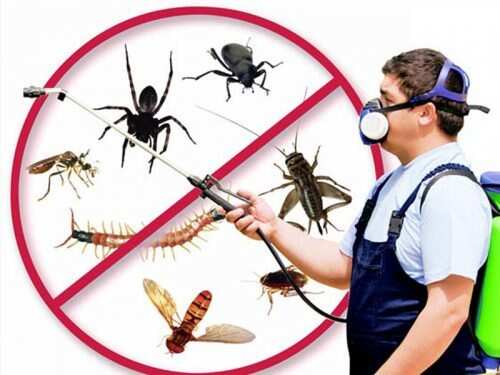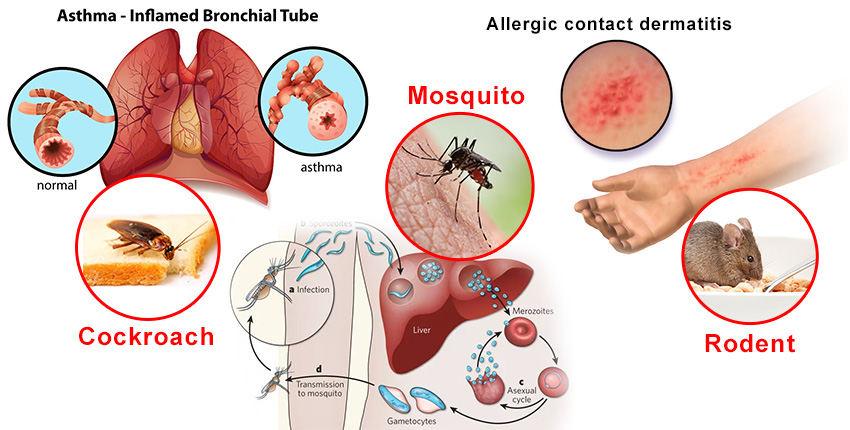The 7-Second Trick For Eco Bed Bug Exterminators Dc
The 7-Second Trick For Eco Bed Bug Exterminators Dc
Blog Article
Eco Bed Bug Exterminators Dc Can Be Fun For Everyone
Table of ContentsIndicators on Eco Bed Bug Exterminators Dc You Should KnowThe Of Eco Bed Bug Exterminators DcEco Bed Bug Exterminators Dc - An OverviewEco Bed Bug Exterminators Dc - An OverviewSee This Report about Eco Bed Bug Exterminators Dc
Since chemicals are poisonous, they are also possibly harmful to humans, animals, other organisms, and the setting. As a result, individuals who make use of chemicals or on a regular basis can be found in call with them need to comprehend the family member toxicity, potential health and wellness impacts, and preventative measures to minimize exposure to the products they utilize. Danger, or risk, of using chemicals is the capacity for injury, or the degree of threat associated with using a chemical under a given collection of conditions.
Nonetheless, applicators can lessen or almost get rid of exposure-- and thus reduce hazard-- by complying with the tag guidelines, utilizing individual protective apparel and equipment (PPE), and taking care of the chemical appropriately. For instance, greater than 95 percent of all pesticide direct exposures originate from facial exposure, primarily to the hands and forearms. By using a set of unlined, chemical-resistant gloves, this kind of direct exposure can be virtually eliminated.
The harmful results that take place from a single exposure by any kind of path of entry are labelled "acute impacts." The 4 courses of direct exposure are facial (skin), inhalation (lungs), oral (mouth), and the eyes. Severe poisoning is established by checking out the dermal poisoning, inhalation poisoning, and dental toxicity of guinea pig.
How Eco Bed Bug Exterminators Dc can Save You Time, Stress, and Money.
Acute poisoning is determined as the amount or focus of a toxicant-- the a.i.-- called for to eliminate half of the pets in an examination populace. This measure is generally revealed as the LD50 (deadly dose 50) or the LC50 (deadly focus 50). Furthermore, the LD50 and LC50 values are based upon a single dose and are recorded in milligrams of pesticide per kg of body weight (mg/kg) of the test animal or in parts per million (ppm).
The lower the LD50 or LC50 value of a chemical product, the higher its toxicity to human beings and pets. Chemicals with a high LD50 are the least harmful to humans if used according to the instructions on the item label. The chronic toxicity of a pesticide is figured out by subjecting you could check here guinea pig to long-term direct exposure to the energetic component.
The chronic toxicity of a chemical is harder than acute toxicity to identify through lab evaluation. Products are categorized on the basis of their family member intense poisoning (their LD50 or LC50 values). Chemicals that are classified as highly harmful (Poisoning Group I) on the basis of either dental, dermal, or breathing poisoning must have the signal words DANGER and POISON published in red with a skull and crossbones symbol plainly displayed on the front panel of the plan label.
The acute (solitary dosage) dental LD50 for pesticide items in this group ranges from a trace total up to 50 mg/kg. For example, exposure of a couple of decreases of a material taken by mouth could be fatal to a 150-pound individual. Some chemical items have just the signal word DANGER, which tells you nothing about the intense toxicity, simply that the item can trigger extreme eye damage or extreme skin irritability
The Of Eco Bed Bug Exterminators Dc
In this classification, the intense dental LD50 varieties from 50 to 500 mg/kg. A teaspoon to an ounce of this material can be fatal to a 150-pound person (bed bug treatment). Pesticide products classified as either somewhat hazardous or reasonably nontoxic (Toxicity Categories III and IV) are needed to have the signal word care on the pesticide tag

All pesticide toxicity valuesPoisoning worths the Consisting of, can be found on the product's Item Safety Product Sheet (MSDS). Chemical tags and MSDS can be obtained from retailers or makes - https://www.goodreads.com/user/show/176614165-christopher-savage. The signs and symptoms of chemical poisoning can vary from a light skin irritability to coma or also fatality.
Due to the fact that of prospective wellness problems, chemical individuals and handlers have to acknowledge the usual signs and signs of pesticide poisoning. The effects, or symptoms, of pesticide poisoning can be broadly defined as either topical or systemic.
Little Known Questions About Eco Bed Bug Exterminators Dc.
Dermatitis, or inflammation of the skin, is accepted as one of the most frequently reported topical result related to pesticide exposure. Signs and symptoms of dermatitis array from reddening of the skin to breakouts and/or blisters. Some individuals often tend to cough, wheeze, or sneeze when exposed to chemical sprays. Some individuals respond to the solid smell and annoying results of oil extracts used as service providers in pesticide items.
This signs and symptom generally subsides within a few minutes after a person is eliminated from the direct exposure to the toxic irritant. A reaction to a pesticide product that creates somebody not only to sneeze and cough yet likewise to develop serious acute respiratory system signs and symptoms is a lot more likely to be a real hypersensitivity or allergic response.
Systemic effects are fairly various from topical impacts. They commonly take place away from the initial point of contact as an outcome of the pesticide being absorbed right into and dispersed throughout the body. Systemic effects typically consist of nausea, vomiting, tiredness, headache, and intestinal tract conditions. In advanced poisoning situations, the individual might experience modifications in heart rate, trouble breathing, convulsions, and coma, which could result in death.
Report this page